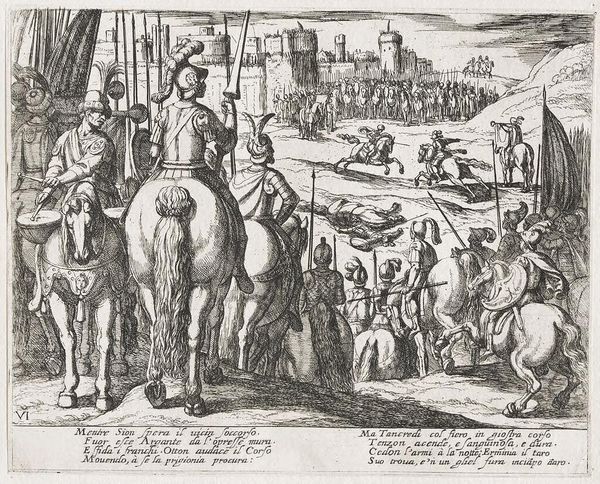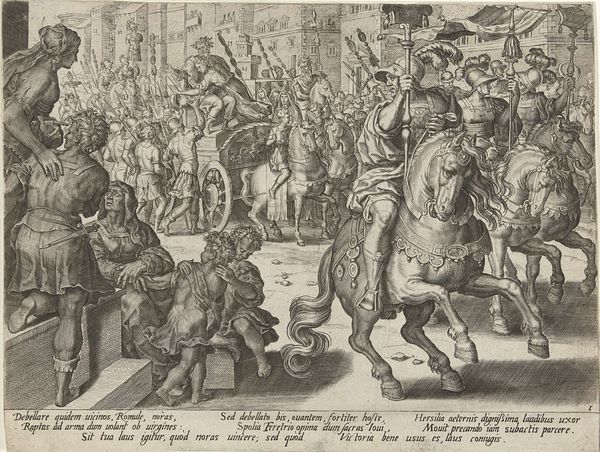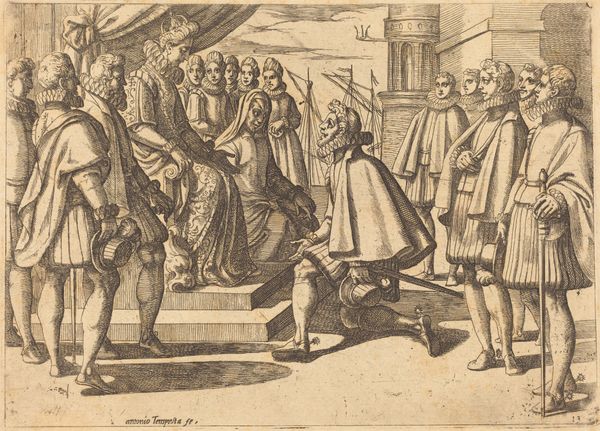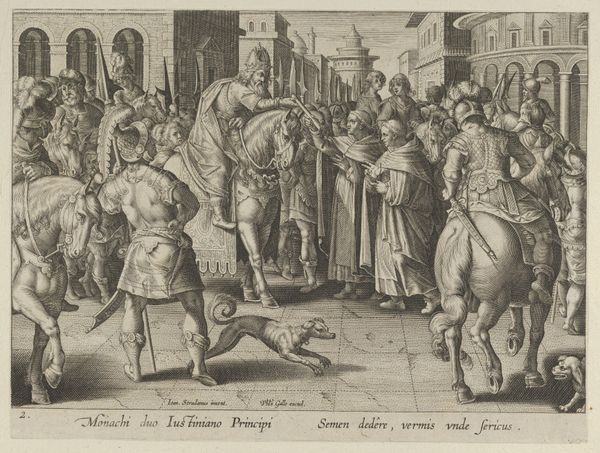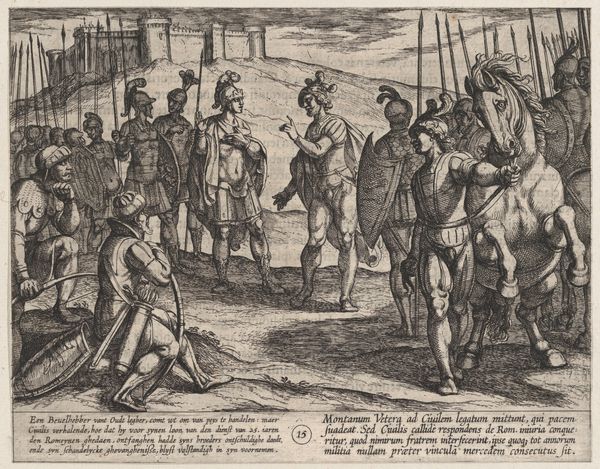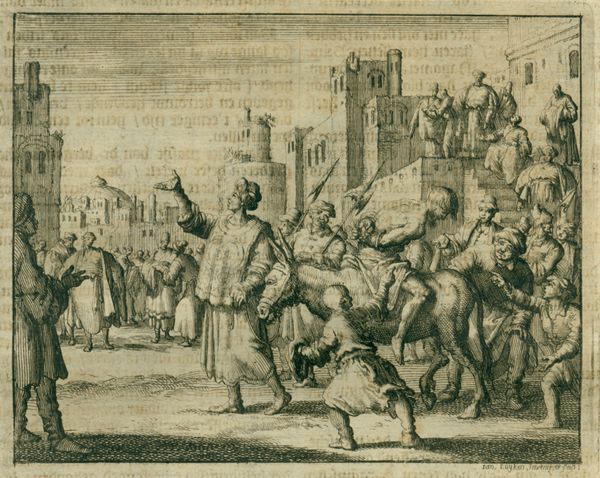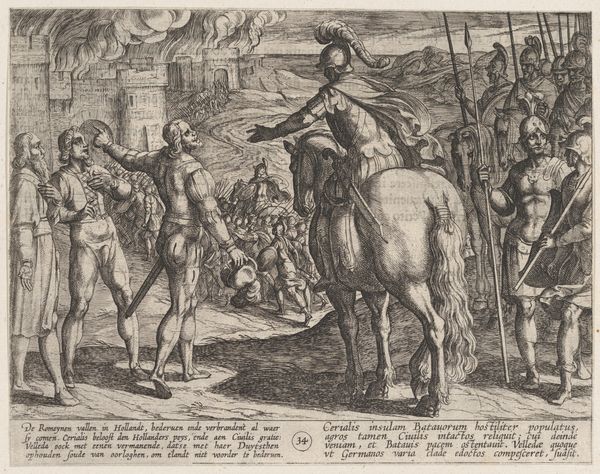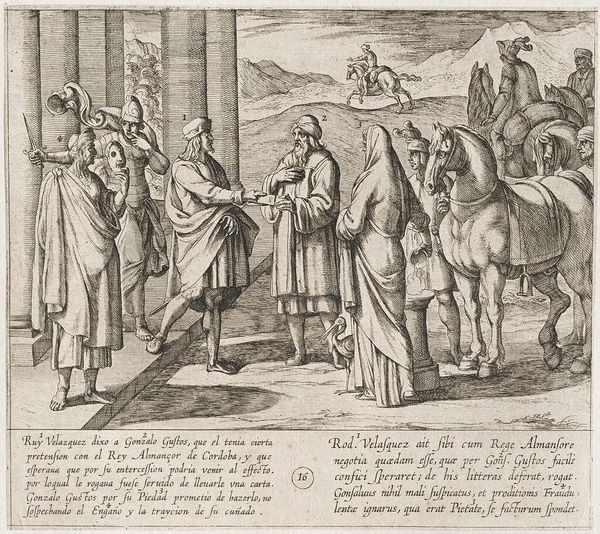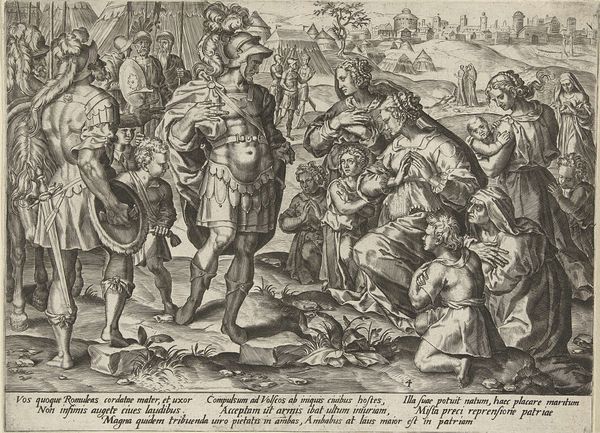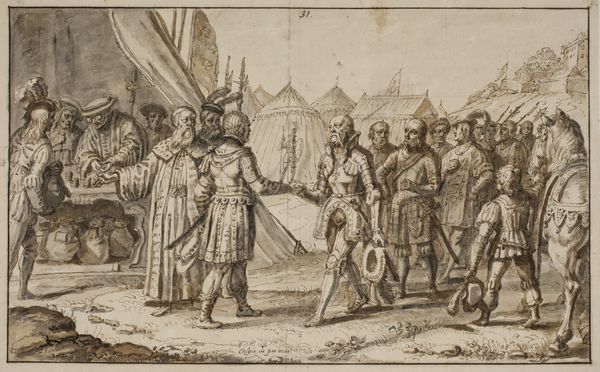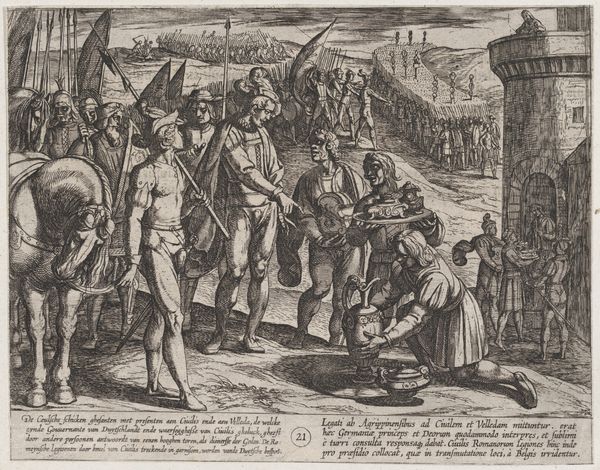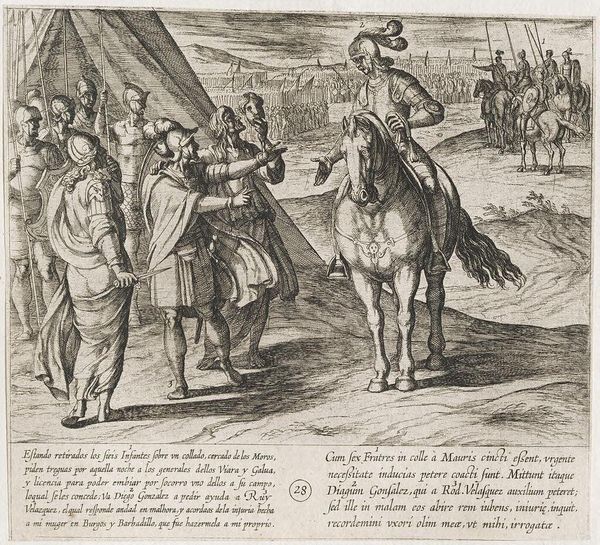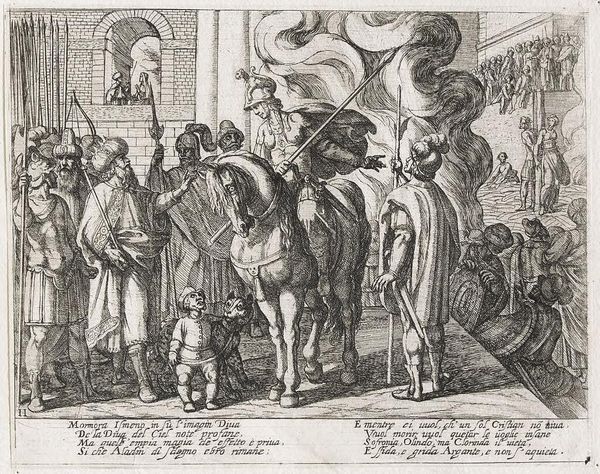
#
comic strip sketch
#
quirky sketch
#
pen illustration
#
pen sketch
#
personal sketchbook
#
sketchwork
#
pen-ink sketch
#
pen work
#
sketchbook drawing
#
sketchbook art
Dimensions: height 47 mm, width 64 mm
Copyright: Rijks Museum: Open Domain
Editor: So, here we have Wenceslaus Hollar’s "David Gives Uriah a Letter for Joab" from 1638, currently held at the Rijksmuseum. It appears to be an ink drawing of a biblical scene. It’s interesting how much detail he gets with what seems like a very simple medium. What strikes you when you look at this? Curator: As a materialist, my eye goes immediately to the process itself. Hollar, though etching and engravings, mass-produced images, which were crucial in disseminating information and influencing public opinion. Consider the availability of paper, ink production, and the social structure supporting such a venture. How does the act of distributing this scene change its interpretation? Editor: I hadn't thought about that. How accessible would an image like this have been at the time? Curator: Exactly. The reproductive nature of the medium democratizes the narrative to a certain extent, although accessibility still would have depended on wealth and literacy. And consider who controlled the narrative: printers, publishers, and patrons who commissioned the work held power in shaping the dissemination. The labor of creating this image - the drawing, the etching, the printing - speaks to the economies and social structures of 17th century Europe. Does this not shape how we see David, Uriah, and Joab's story unfolding here? Editor: So, it’s not just about the biblical story, but about the mechanics of how that story was shared, and who got to see it? Curator: Precisely. This affects the power dynamics. This reproduction reframes it by making it a commodity. The materiality directs us towards a consideration of power. Editor: That’s a fascinating way to look at it. It gives the work a completely different dimension. Curator: Indeed. Understanding the material and its journey to our eyes informs us to go beyond subject and the narrative and challenges us to examine our place in its historical context.
Comments
No comments
Be the first to comment and join the conversation on the ultimate creative platform.
